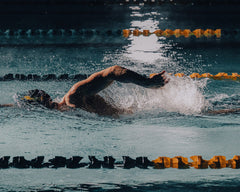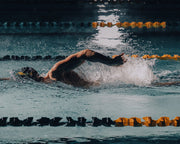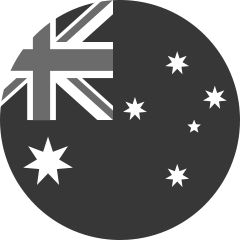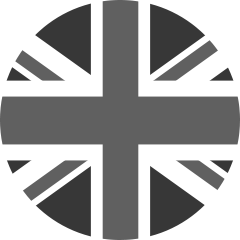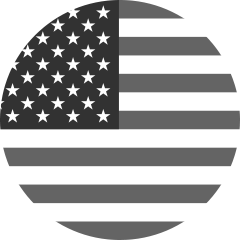How Important Is Hydration for Swimming?
Guest blog from our friends at Precision Fuel & Hydration
“Do I really need to drink when I’m swimming? I’m literally in water.”
It’s one of the most common misconceptions in swimming, whether you're doing laps staring at the black line on the bottom of the pool or battling waves in the open water. But just because you don’t feel sweat dripping down your face with your head underwater, it doesn’t mean your body isn’t losing fluid.
The truth is: swimmers sweat. Sometimes a lot. And if you don’t stay on top of hydration before, during, and after your sessions, your performance and recovery will suffer.
Even mild dehydration can have a negative impact on your thermoregulation, nutrient absorption and even muscle contraction, which will inevitably affect your performance in the water.
So, let’s break down exactly how to start and stay hydrated in the water, and how to limit the negative effects of dehydration…
Pre-Swim Hydration
It’s not advisable to start a long run or bike ride without taking on some fluids, and swimming is no different.
Proper hydration supports thermoregulation, muscle function, and energy delivery. In the 24 hours leading up to a key swim, drink to thirst and consider adding an extra 500ml (16oz) of water throughout the day.
If you're swimming in a wetsuit, in warm weather, tend to sweat heavily, or preparing for a long swim, preload with a high-strength electrolyte drink (e.g. PH 1500) ~60-90 minutes before your swim. This tactic can help you retain fluid and avoid over-drinking plain water, which in turn will help reduce the need to pee once you’re swimming!

Pre-hydration tip:
⚠️ Avoid chugging lots of plain water the day before and morning of your swim, as this can dilute your blood electrolyte levels, increasing the risk of hyponatremia (a potentially dangerous drop in blood sodium concentration).
Mid-Swim Hydration
Most swimmers don’t feel thirsty in the water. But that doesn’t mean you aren’t losing fluid. The cooling effect of water can mask sweat loss and thirst, making dehydration harder to detect. In the pool, having your bottle at the end of the lane makes it easy to take regular sips during breaks between intervals.
Hydrating during open-water training sessions or races can be a more logistical challenge. But if your swim is long or intense, fluid and electrolyte loss through sweating still matters, even if you don’t ‘feel’ hot.
The easiest way to access fluids during open water swims is to complete laps past a pontoon or boat carrying your bottles.
If you’re fortunate enough to have a support kayak or paddleboarder, aim to take on small sips every 20–30 minutes. Try to avoid large gulps of water, as the horizontal body position means your digestive system must work harder in the absence of gravity’s help.
Top Tip: Occasionally, combining your electrolytes and some carbs will help with both fluid absorption and give you extra energy. It also means you have less to do when taking short breaks to get nutrition.
-
For swims <1 hour
If you're well hydrated beforehand, you likely don’t need to drink much (if anything) during the swim. Just make sure to rehydrate by drinking a strong electrolyte drink afterwards if it was a particularly intense swim.
-
For swims >1 hour
Aim to sip every 20–30 minutes, especially if it’s hot or you're planning a long one.
If you’re practicing in the pool for an open water event, try placing your bottle along the pool edge (requires an end lane). This way, you can roll onto your back as you swim alongside it, grab the bottle, take a few sips (whilst doing single-arm backstroke) and place it back on the pool deck before continuing your length. This will help your body adapt to swallowing and digesting whilst you’re still horizontal and swimming.
If you’re swimming in the open water, make use of a tow float to stash a bottle or soft flask. Depending on how long you’re going, you might consider adding some carbs to your bottle to help hit your hydration and fueling requirements.
Post-Swim (Re)hydration
How dehydrated you are after a swim will depend on how long or tough a swim you’ve just done.
Ultimately, our bodies are pretty good at helping us to rehydrate as they bid to maintain equilibrium. Homeostasis is an excellent regulator of water and electrolyte levels in the body, mainly because keeping sodium and fluid in equilibrium is essential to keeping us alive. Homeostatic responses to even mild dehydration are powerful and include feelings of thirst and a craving for salt. So generally, if you have access to fluids and salts post-exercise, you’ll probably replenish what you need by listening to your body’s instincts and cancel out any deficit over the course of a few hours.
If your body fluid losses aren’t significant and your recovery time between swims is long enough, it’s highly unlikely that you’ll need to follow any specific protocols to ensure adequate rehydration takes place.
If you’ve just finished a long swim and noticed some warm, salty fluid pouring down your face (spoiler: it’s not pool water). You might need some extra help rehydrating. Whatever you lose, you must replace at some point
There’s ample literature which suggests that in order to fully rehydrate after exercise, you need to consume quite a bit more fluid than you’ve sweated out. This is because you won’t absorb and retain everything that you drink (some will be lost in urine, for example), and you’ll potentially carry on sweating for a time after finishing.
You can get a handle on how much fluid you sweat out during a swim by following this how to measure your sweat rate guide. This involves weighing yourself before and after some key training swims. Replacing ~150% of your losses in the first 2-3 hours appears to be the ‘sweet spot’ that most credible scientists settle on as sensible for rehydration.
This means that if you end a swim 1 kg / 32oz lighter than you started, it’ll take about 1.5 litres / 40 oz of fluid (and electrolyte) intake to completely rehydrate (i.e. 1 litre = 1 kg / 32 oz = 2.2 lbs).
Studies have tested consuming 200% of fluid losses, but simply found increased production of urine, so it’s best not to go too mad with the post-swim drinks, as more doesn’t necessarily mean better.

If weighing yourself isn’t possible, the colour of your urine is often a good indicator of your hydration status. If your pee is dark, or you’re not peeing for hours post-swim, you're probably still underhydrated.
Sodium is known as a key fluid retainer in the blood plasma, and when dosed appropriately, it can help our body absorb the fluid we drink. A maximally effective rehydration mix will contain around 1,500mg of sodium per litre. This is the reason why we often recommend PH 1500 electrolytes as an ideal post-session or post-race drink at times when your sweat losses have been high.
If you think you’ve finished a swim particularly dehydrated, it’s helpful to either add glucose or sugar to your rehydration drink. Or, you can eat something sugary alongside a strong sodium drink in order to achieve a similar effect.
Sugar and salt combined will rehydrate you better than water alone. This is because the sodium in salt and glucose in the sugar combine in the gut to take advantage of a process called ‘sodium-glucose co-transport’. This essentially pulls more water through the wall of your gut into the bloodstream (and keeps it there) than drinking plain water alone can achieve.
Special Considerations for Cold Water Swims
When you're training or racing outdoors, hydration plays a critical role. And the colder the water, the trickier it gets.
First, being immersed in cold water can trigger immersion diuresis, where blood is redirected from your skin to the core, increasing kidney filtration and subsequently urging you to pee more regularly - even if you’re not overly hydrated.
Additionally, swimming in cold water can actually suppress your thirst reflex, making it more likely you will underdrink, especially if you’re not visibly sweating. Plus, your body works hard to stay warm, increasing metabolic activity, which increases your energy (and sometimes fluid) needs even in cooler temps.
The temperature of your nutrition can have a big impact here. Warm drinks are generally better tolerated in cold conditions as they’re easier to digest, make you feel warmer when consuming them, and are simply more palatable when you're shivering. They can also be a massive morale boost if you’re feeling cold.
Interestingly, a 2014 review of nutrition considerations for open-water swimming actually found no strong evidence linking warm feed temperatures with significant changes in core body temperature. However, Ultraswimming World Record holder Andy Donaldson found during his Manhattan Island swim that the thermal comfort and psychological resilience of warm feeds is second-to-none. They made him feel warmer, and at the end of the day, if it feels better and helps you keep fueling - that’s performance-enhancing in itself.
So, if you're swimming with support, ask them for warm drinks in insulated bottles or flasks. Even in tepid water, slightly warm carbs and electrolytes can reduce gut stress and keep your stomach happier on longer swims. Just test this in training, as some people prefer room temperature feeds over anything ‘hot’.
All in all, adding some warmer fluids often makes it more satisfying and palatable, so it’s worth experimenting with.
Hydration Takeaways
Whether you’re swimming short or long, warm or cold, getting your hydration right can make all the difference.
Here’s what to remember:
✅ Start well hydrated (consider ‘preloading’ with a strong electrolyte drink)
✅ Swimmers sweat – even in cold water
✅ Colder swims = higher fuel needs
✅ Watch your pee habits
✅ Hydrate during long swims
✅ Rehydrate after every swim
If you need help dialling in your open water hydration plan, book a free one-to-one Video Consultation with the Precision Fuel & Hydration team to discuss your strategy.




